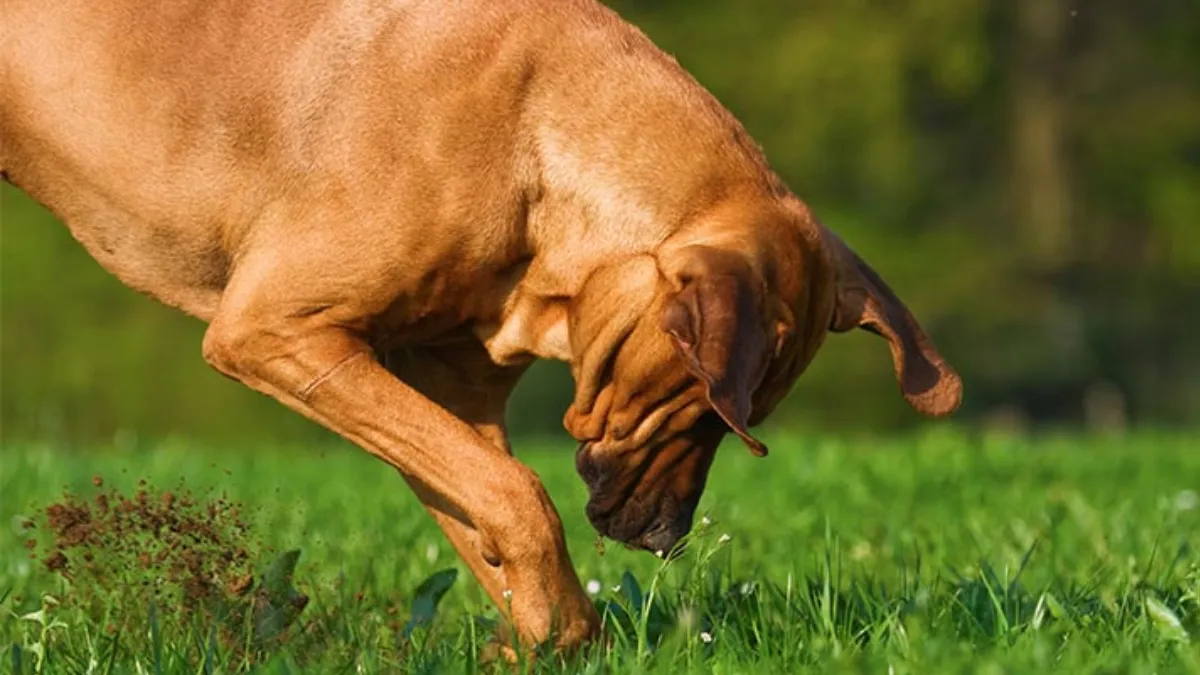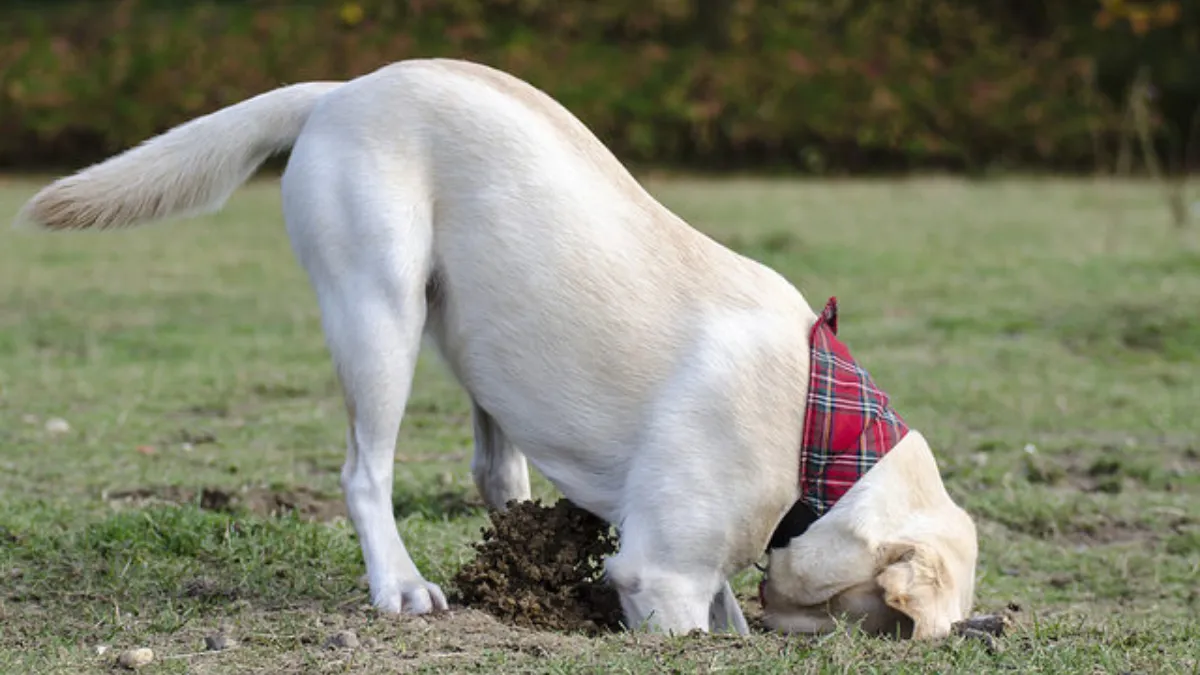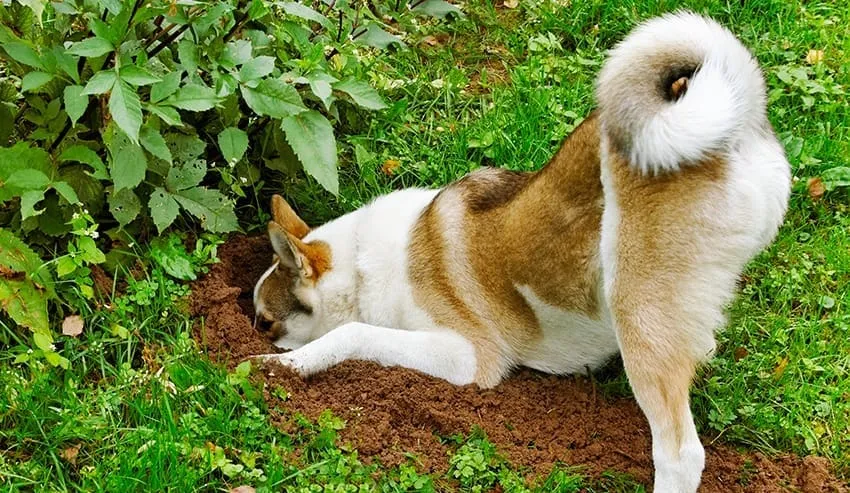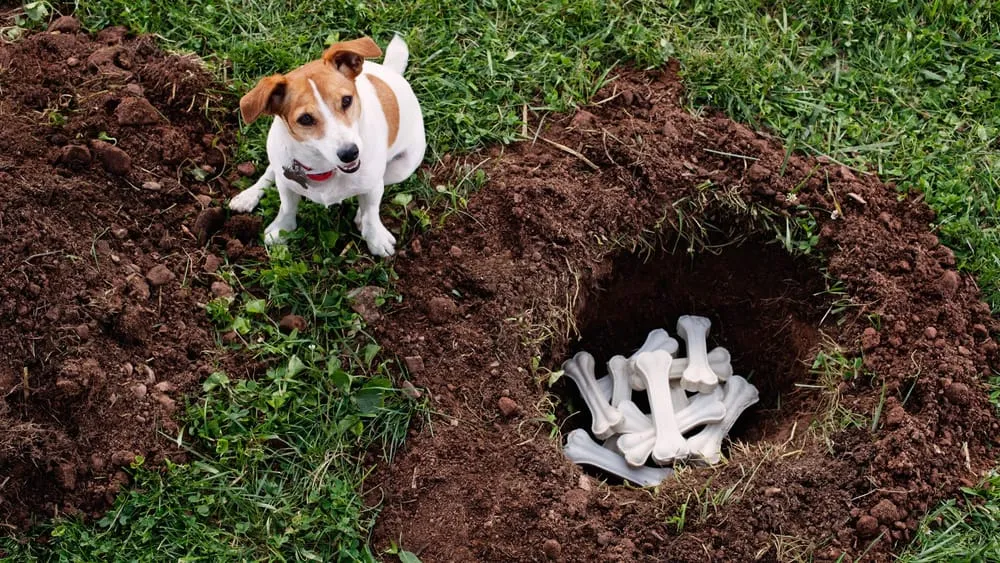Dogs are renowned for their quirky behaviors, and one peculiar habit often observed is food hiding. As a pet owner, you may have noticed your dog stashing food in different corners of your home. Despite its seeming oddity, this behavior is a widespread trait among dogs. Wondering, "Why Does My Dog Hide Food?."
Understanding this instinctive behavior sheds light on their evolutionary past. In the wild, dogs would store surplus food for later consumption or protect it from potential threats. While domesticated, this instinct persists, influenced by a mix of genetic heritage and environmental factors. Recognizing and respecting these behaviors helps foster a deeper understanding of your canine companion's instincts and natural inclinations.
There are several reasons why dogs hide food. One reason is that it is an instinctual behavior that dates back to their wild ancestors. In the wild, dogs would often bury their food to keep it safe from other predators or to save it for later. While domesticated dogs may not need to worry about predators, the instinct to hide food remains.

Another reason why dogs hide food is that they may be feeling anxious or stressed. Dogs who are anxious or stressed may hide food as a way to cope with their emotions. Additionally, dogs who are not getting enough food or who are afraid their food will be taken away may hide it as a way to ensure they have enough to eat. Understanding why your dog is hiding food can help you address any underlying issues and ensure they are getting the care they need.
Understanding Dog Behavior and Hiding Food
Dogs are known for their peculiar behavior, and one such behavior is hiding food. While it may seem odd to us, it is an instinct for dogs to hide food. Understanding why dogs hide food can help you better understand your furry friend's behavior.

Natural Instincts and Survival Strategies
Dogs are descendants of wolves, and like their ancestors, they have an instinct to hide food. Wolves are known to hide food to protect it from other predators and to save it for later. Similarly, dogs may hide food to protect it from other animals or to save it for later when they are hungry.
In the wild, dogs have to scavenge for food, and they never know when their next meal will be. Therefore, hiding food is a survival strategy that helps them ensure they have something to eat when they need it.
Signs of Anxiety and Stress in Dogs
While hiding food can be an instinct for dogs, it can also be a sign of anxiety and stress. If your dog is hiding food more frequently than usual, it could be a sign that they are feeling anxious or stressed.
Other signs of anxiety and stress in dogs include pacing, excessive barking, panting, and destructive behavior. If you notice any of these signs, it is essential to address the underlying cause of your dog's anxiety and stress. You can do this by providing a safe and comfortable environment for your dog, giving them plenty of exercise and playtime, and seeking professional help if necessary.
In conclusion, dogs hide food as an instinct and survival strategy. However, it can also be a sign of anxiety and stress. Understanding why your dog is hiding food can help you provide them with the care and attention they need.
Environmental Factors Influencing Food Hiding

Dogs have an instinctual behavior of hiding food, which can be influenced by various environmental factors. Understanding these factors can help dog owners provide a comfortable and safe environment for their pets.
Home Environment and Safe Spaces
A dog's home environment can play a significant role in its food-hiding behavior. Dogs may hide their food in places where they feel safe and secure, such as under furniture or in corners. They may also hide food if they feel threatened or anxious, such as during thunderstorms or when there are strangers in the house.
Providing a safe and comfortable space for the dog can help reduce its anxiety and prevent food-hiding behavior. This can include creating a designated area for the dog to eat, such as a quiet corner of the house, and ensuring that the dog has access to its bed or crate.
Impact of Routine and Feeding Practices
A dog's feeding routine and practices can also influence its food-hiding behavior. Dogs that are fed irregularly or have limited access to food may be more likely to hide their food. This is because they may not know when their next meal will be, and they want to ensure that they have food available when they need it.
On the other hand, dogs that are fed on a regular schedule and have access to plenty of food may be less likely to hide their food. This is because they know that food will be available when they need it, and they do not feel the need to hoard it.
Controlling the dog's eating environment can also help prevent food-hiding behavior. This can include using a food bowl that is difficult to move or placing the food bowl in a location that is not easily accessible to other pets or children.
In conclusion, understanding the environmental factors that influence a dog's food-hiding behavior can help dog owners create a safe and comfortable environment for their pets. By providing a designated eating area, ensuring a regular feeding schedule, and controlling the dog's eating environment, owners can help prevent food-hiding behavior and ensure their pet's well-being.

Behavioral Reasons for Food Hiding
Dogs have been known to hide food for various reasons, ranging from instinctive behaviors to learned habits. Understanding why your dog is hiding food can help you address the underlying issues and prevent this behavior from becoming a problem.
Boredom and Seeking Stimulation
One of the most common reasons why dogs hide food is boredom. Dogs that are left alone for long periods or have limited opportunities for exercise and play may resort to hiding food as a way to seek stimulation. Hiding food can be a fun and rewarding activity for dogs, especially if they have nothing else to do.
To address this issue, owners should provide their dogs with plenty of opportunities for physical activity and mental stimulation. Toys, such as puzzle toys and treat-dispensing toys, can keep dogs entertained and help prevent boredom. Scent work is also a great way to provide dogs with mental stimulation and can help satisfy their instincts.
Training and Learned Behaviors
Another reason why dogs hide food is that they have been trained to do so. Some dogs may have learned to hide food as a way to save it for later or to avoid having it taken away by other dogs or humans. This behavior can be reinforced if the dog is rewarded for hiding food, such as receiving attention or treats.
To address this issue, owners should discourage their dogs from hiding food by providing them with a designated feeding area and supervising their meals. Owners can also work with a professional trainer to modify the dog's behavior and teach them to eat their food immediately.
In conclusion, dogs may hide food for various reasons, including boredom and learned behaviors. By providing dogs with plenty of opportunities for physical activity and mental stimulation, as well as discouraging the behavior through training and supervision, owners can help prevent this behavior from becoming a problem.
Health and Nutrition Considerations

Overfeeding and Dietary Management
One possible reason why a dog may hide food is due to overfeeding. Dogs who are given too much food may feel overwhelmed and hide the excess food for later. Pet owners need to monitor their dog's feeding habits and ensure that they are not overfeeding them.
One way to manage a dog's diet is to establish a feeding schedule. This can help regulate their appetite and prevent them from feeling the need to hide food. Measuring out the appropriate amount of food for each meal can also help prevent overfeeding.
Consulting a Veterinarian for Underlying Issues
If a dog continues to hide food despite dietary management, it may be a sign of an underlying health issue. Pet owners should consult with a veterinarian to rule out any medical conditions that may be causing their dog to hide food.
Some medical conditions that can affect a dog's appetite include dental problems, gastrointestinal issues, and hormonal imbalances. A veterinarian can perform a physical examination and run diagnostic tests to determine if any underlying health issues need to be addressed.
In addition to medical conditions, a veterinarian can also guide proper nutrition for a dog's specific needs. This can include recommendations on the type and amount of food to feed, as well as any supplements that may be necessary.
Overall, it is important for pet owners need to monitor owners to monitor their dog's feeding habits and consult with a veterinarian if they have any concerns. By managing their dog's diet and addressing any underlying health issues, pet owners can help ensure that their furry friend stays healthy and happy.

Guarding Resources and Territorial Behaviors
Dogs are known to exhibit guarding behaviors, especially when it comes to their resources and possessions. Resource guarding is a natural behavior in dogs, and it can be exhibited in various forms such as food guarding, toy guarding, and space guarding. In this section, we will explore the reasons behind this behavior and how it relates to territorial behaviors.
Resource Guarding and Possessiveness
Resource guarding is a behavior where a dog becomes possessive and protective of its resources such as food, toys, and even people. This behavior can be triggered by a variety of factors including fear, anxiety, and past experiences. Dogs that have experienced food scarcity in the past are more likely to exhibit resource-guarding behaviors around food.
Resource guarding can also be a sign of possessiveness, where a dog feels the need to protect its possessions from others. This can be seen in situations where a dog becomes protective of its toys or bed. It is important to note that possessiveness is not always a negative behavior, as it can also be a sign of loyalty and affection towards their owners.
Competition Among Dogs and Sibling Rivalry
Competition among dogs is another factor that can trigger resource-guarding behavior. This can be seen in households with multiple dogs, where they compete for resources such as food and attention from their owners. Sibling rivalry is also common among dogs, especially those that are raised together from a young age. In such cases, resource guarding can be a way for dogs to establish dominance and maintain their position in the pack.
In conclusion, guarding resources and territorial behaviors are natural behaviors in dogs. Dog owners need to understand the reasons behind these behaviors and take appropriate measures to manage them. This can include providing each dog with its resources, training them to share, and seeking professional help from a dog behaviorist if needed.
Training Techniques to Reduce Food Hiding
When a dog hides food, it can be frustrating and concerning for their owner. However, several training techniques can be used to reduce or eliminate this behavior.

Positive vs Negative Reinforcement
One effective training technique is positive reinforcement. This involves rewarding the dog for good behavior, such as leaving their food in their bowl. Treats, praise, and affection can all be used as rewards for positive behavior.
On the other hand, negative reinforcement involves punishing the dog for unwanted behavior, such as hiding their food. This can include scolding, physical punishment, or withholding threats or affection. However, negative reinforcement can be harmful and may lead to other behavior problems.
Positive reinforcement is generally considered a more effective and humane training technique. By rewarding the dog for desired behavior, they are more likely to repeat that behavior in the future.
Creating a Controlled Eating Environment
Another way to reduce food hiding is by creating a controlled eating environment. This involves setting a regular feeding schedule and removing any uneaten food after a certain amount of time.
By providing the dog with a consistent routine, they will learn when to expect food and will be less likely to hide it. Additionally, removing uneaten food prevents the dog from hiding it for later, as there will be no food available to hide.
It's also important to feed the dog in a quiet and calm environment, away from distractions and other pets. This can help reduce anxiety and stress, which may contribute to food-hiding behavior.
Overall, training techniques such as positive reinforcement and creating a controlled eating environment can help reduce or eliminate food-hiding behavior in dogs. By using these techniques consistently and patiently, owners can help their dogs develop healthy eating habits and reduce stress and anxiety.
Special Considerations for Rescue Dogs
Rescue dogs have unique backgrounds that may contribute to their hoarding behavior, including past traumas and experiences. As a result, it is important to address these issues when trying to understand why a rescue dog may hide food.
Addressing Past Traumas and Hoarding Behaviors
Rescue dogs may have experienced neglect or abuse in their previous homes, leading them to develop hoarding behaviors as a way to cope with their insecurity and lack of resources. Addressing these past traumas may require the help of a professional, such as a veterinarian or animal behaviorist.
One approach to addressing past traumas is through counter-conditioning, which involves associating positive experiences with the food and feeding process. This can help the dog feel more secure and less likely to hoard food.

Adapting to a New Environment and Routine
Rescue dogs may also struggle with adapting to a new environment and routine. This can lead to anxiety and stress, which may manifest in hoarding behaviors. It is important to provide a stable and predictable environment for the dog, with consistent feeding times and locations.
Additionally, it may be helpful to gradually introduce new stimuli and experiences to the dog, such as new people or other pets. This can help the dog feel more comfortable and less likely to hoard food as a coping mechanism.
Overall, understanding the unique background and needs of rescue dogs is crucial in addressing hoarding behaviors. By addressing past traumas and providing a stable environment, owners can help their rescue dogs feel more secure and less likely to hide food.
Conclusion:
In conclusion, understanding the question "Why Does My Dog Hide Food?" delves into the fascinating world of canine instincts. This behavior, rooted in ancestral survival tactics, persists in our domesticated companions. Dogs may hide food to safeguard it for later, reflecting their innate drive to secure resources. Recognizing and respecting this instinct contributes to a stronger bond between pet and owner.
As a responsible pet parent, observing and comprehending these behaviors enables you to create a supportive environment for your dog. So, the next time you ponder, "Why does my dog hide food?" consider it an opportunity to connect with your furry friend on a deeper level, appreciating their inherent instincts and behaviors.
Frequently Asked Questions (FAQs)
- What causes dogs to hide their treats and bones?
- Dogs have an instinctual behavior of hiding food and treats. This behavior is rooted in their wild ancestors who would hide their food to protect it from other animals and to save it for later. Domestic dogs may still exhibit this behavior, especially if they have a strong prey drive or are not properly socialized as puppies.
- Is it normal behavior for a dog to hide food under blankets or in beds?
- Yes, it is normal behavior for dogs to hide food under blankets or in beds. Dogs may feel more secure when they are hiding their food in a safe place. However, it is important to monitor this behavior to ensure that the food does not spoil or attract pests.
- Should I be concerned if my dog is suddenly hiding toys or food?
- If your dog suddenly starts hiding toys or food, it may be a sign of anxiety or stress. Dogs may hide their possessions when they feel threatened or when there are changes in their environment. It is important to observe your dog's behavior and address any underlying issues.
- How should I respond to my dog trying to bury or cover their food?
- It is important to allow your dog to exhibit their natural behaviors, but it is also important to ensure that their food is not being wasted or attracting pests. You can provide your dog with a designated area to bury their food or offer smaller portions to prevent excess food from being hidden.
- What does it mean when my dog hides treats around the house?
- Dogs may hide treats around the house as a way to save them for later or to protect them from other animals in the household. This behavior is normal, but it is important to monitor the treats to ensure they do not spoil or attract pests.
- Are there any training methods to discourage my dog from hiding food?
- It is possible to discourage your dog from hiding food by providing them with a designated feeding area and offering smaller portions. You can also provide your dog with interactive toys to keep them engaged and prevent them from hiding their food. However, it is important to remember that hiding food is a natural behavior for dogs and may not be eliminated.




